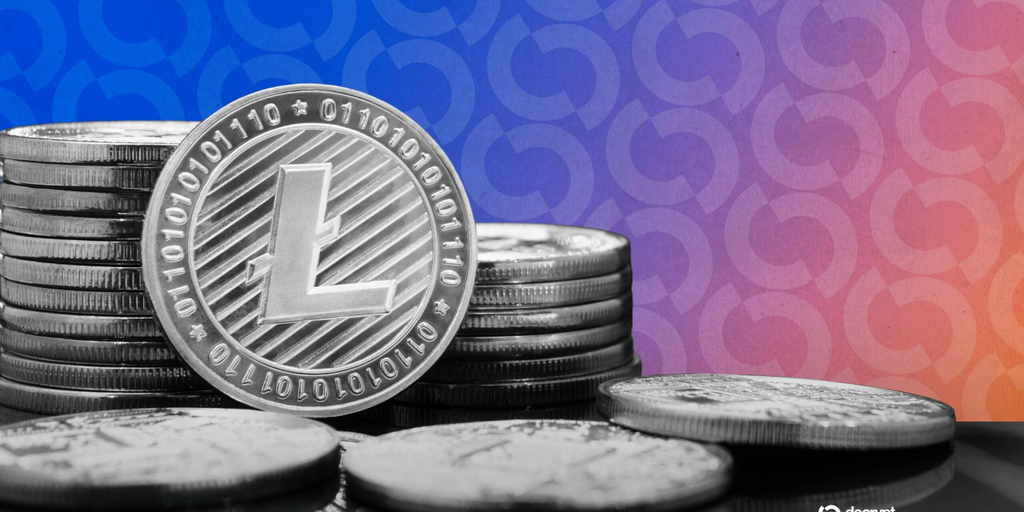
Summary
- Luxxfolio is shifting from Bitcoin mining to a digital asset treasury strategy focused on Litecoin, along with infrastructure plans.
- This shift follows a report of zero revenue and a net loss of $197,000 in Q2, with only $112,000 in cash and an accumulated loss approaching $19 million.
- Litecoin treasuries could attract institutional investors if linked to functional infrastructure, though there are risks of inaction, according to Decrypt.
Canadian crypto infrastructure company Luxxfolio issued a shelf prospectus on Thursday to secure up to CAD$100 million (US$73 million), months after becoming the first public company to base its treasury in Litecoin, stepping away from Bitcoin mining.
Luxxfolio considers Litecoin “hard currency,” as stated by CEO and Director Tomek Antoniak in a statement.
Antoniak emphasized that scalability is vital in their sector—the larger their treasury, infrastructure, and ecosystem footprint, the better their chances of capturing market share and driving adoption. The shelf would provide Luxxfolio with “flexibility” to scale and respond to market needs.
Upon approval, Luxxfolio’s shelf prospectus will allow it to raise funds over 25 months via share, debt, or security issuance.
This latest filing aligns with Luxxfolio’s decision in July to disclose its Litecoin purchases, confirming that the company aims for a total of 1 million LTC by 2026.
Litecoin’s creator Charlie Lee joined its advisory board in late June.
Luxxfolio, along with others embracing the crypto treasury concept, is aligning its strategy around reserves and infrastructure despite struggling financials, characterized by increasing losses and limited liquidity for its stock.
Signs of distress include zero revenue, a net loss of about $197,000 in Q2 compared to a $8,000 loss in the same quarter last year, and nine-month losses that have more than doubled year-over-year, as indicated by its latest quarterly financial report.
The company ended Q2 this year with only $112,000 in cash and depended on a $844,000 private investment to remain operational, having accumulated nearly $19 million in losses since its founding in 2017.
Management has expressed “significant concern” regarding its capacity to continue operations without new funding. Decrypt has reached out to Luxxfolio for additional information.
Don’t just sit on it
Analysts note that a Litecoin-centric digital asset treasury could capture institutional interest if it extends beyond mere accumulation.
This approach might “definitely draw institutional funds if combined with practical infrastructure,” Mehow Pospieszalski, CEO of wallet platform American Fortress, told Decrypt.
Noting that investments in the Litecoin ecosystem exceed $100 million, Pospieszalski remarked that institutions “don’t invest that kind of capital into a non-viable chain,” instead, “they seek scalable systems, compliance avenues, and user adoption.”
However, risks persist if “DATs merely hold onto assets and expect gains,” Pospieszalski cautioned.
“They risk echoing the leverage cycles of 2008,” but a positive shift could occur “when treasuries actively foster the ecosystem” by developing tools that attract users, he said.
Luxxfolio and others seem to be following this route “to mitigate bubble risks by prioritizing utility over speculation,” he added.
“Institutional capital generally gravitates toward assets characterized by the deepest liquidity, strongest adoption, and established market narratives,” noted Shawn Young, chief analyst at MEXC Research, adding that these are “areas where Bitcoin predominantly excels.”
While Litecoin possesses “technical merits and a long-standing reputation,” it lacks developed institutional applications, Young indicated.
A Litecoin DAT could “find its niche if paired with genuine utility,” but is “unlikely to receive equivalent institutional investment as Bitcoin-based strategies,” he remarked.
Nevertheless, the emergence of altcoin treasuries “may serve as the decisive spark that ignites the final phase of the current market cycle,” stated Ray Youssef, CEO of NoOnes, speaking to Decrypt.
Companies like BitMine, SharpLink, Pantera, and others are beginning to “regard blue-chip altcoins as treasury-grade reserve assets,” according to Youssef.
This “vote of confidence,” he argued, is reconfiguring the perception of altcoins, indicating that “institutional capital is no longer confined solely to Bitcoin.”
Daily Debrief Newsletter
Start every day with the top news stories right now, plus original features, a podcast, videos and more.

